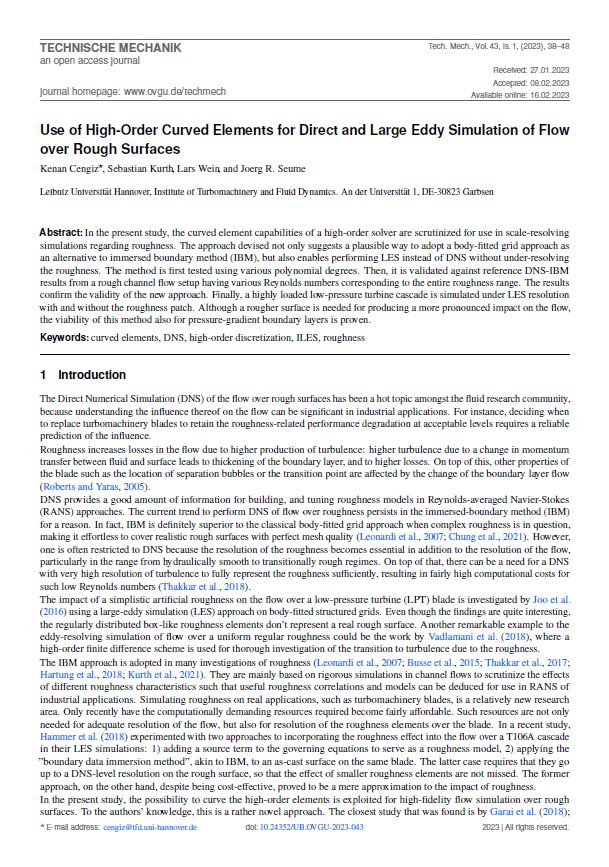Use of High-Order Curved Elements for Direct and Large Eddy Simulation of Flow over Rough Surfaces
DOI:
https://doi.org/10.24352/UB.OVGU-2023-043Keywords:
curved elements, DNS, high-order discretization, ILES, roughnessAbstract
In the present study, the curved element capabilities of a high-order solver are scrutinized for use in scale-resolving simulations regarding roughness. The approach devised not only suggests a plausible way to adopt a body-fitted grid approach as an alternative to immersed boundary method (IBM), but also enables performing LES instead of DNS without under-resolving the roughness. The method is first tested using various polynomial degrees. Then, it is validated against reference DNS-IBM results from a rough channel flow setup having various Reynolds numbers corresponding to the entire roughness range. The results confirm the validity of the new approach. Finally, a highly loaded low-pressure turbine cascade is simulated under LES resolution with and without the roughness patch. Although a rougher surface is needed for producing a more pronounced impact on the flow, the viability of this method also for pressure-gradient boundary layers is proven.

Downloads
Published
How to Cite
Issue
Section
License
Copyright (c) 2023 Kenan Cengiz, Sebastian Kurth, Lars Wein, Joerg R. Seume

This work is licensed under a Creative Commons Attribution-ShareAlike 4.0 International License.




